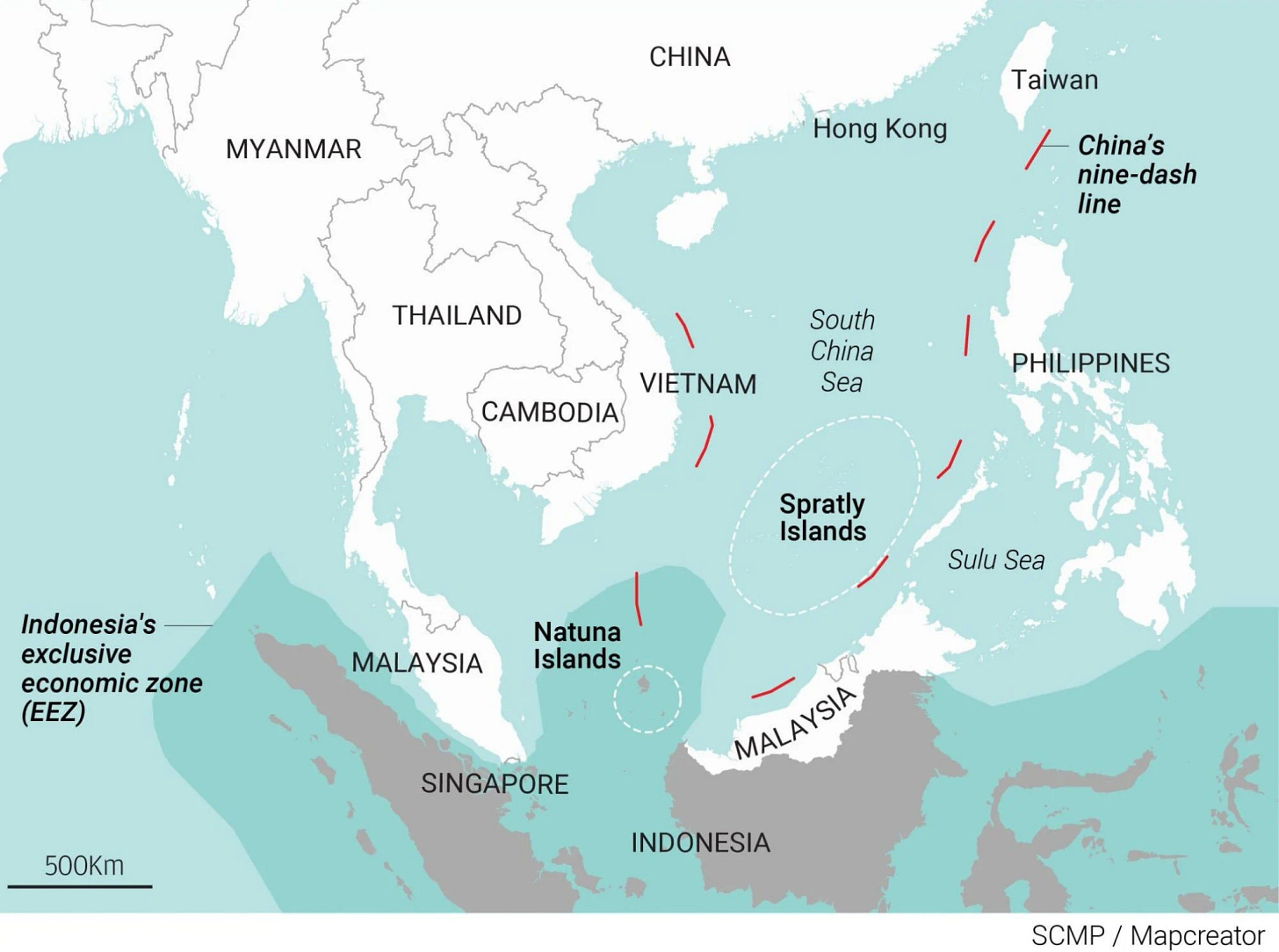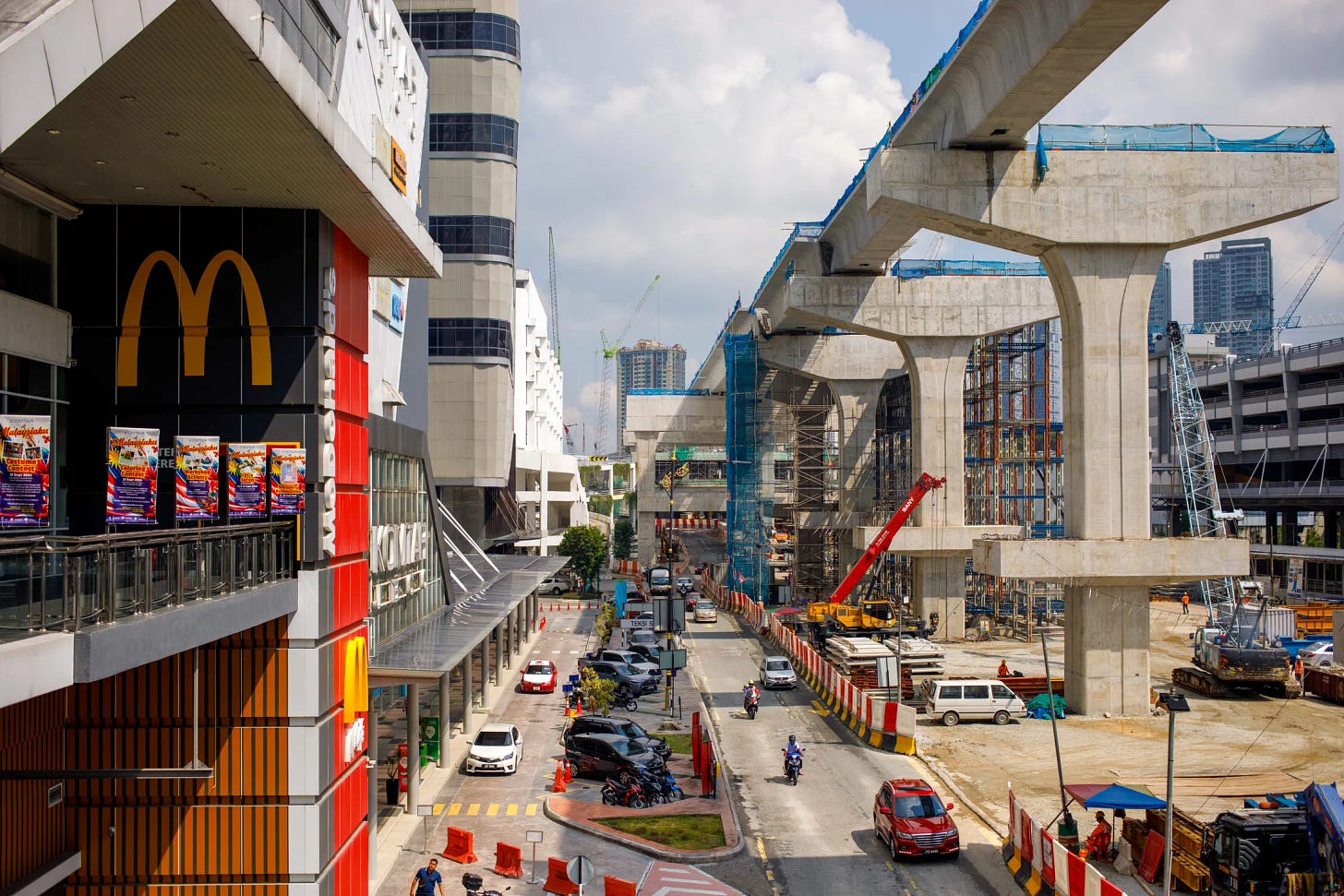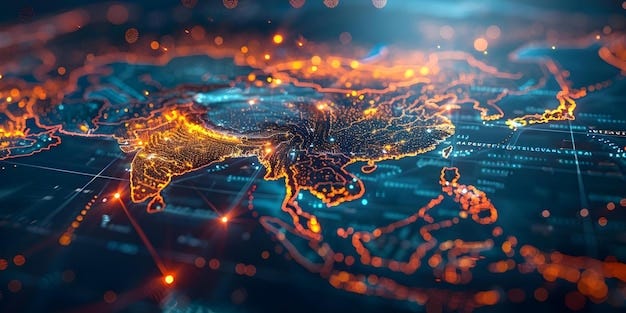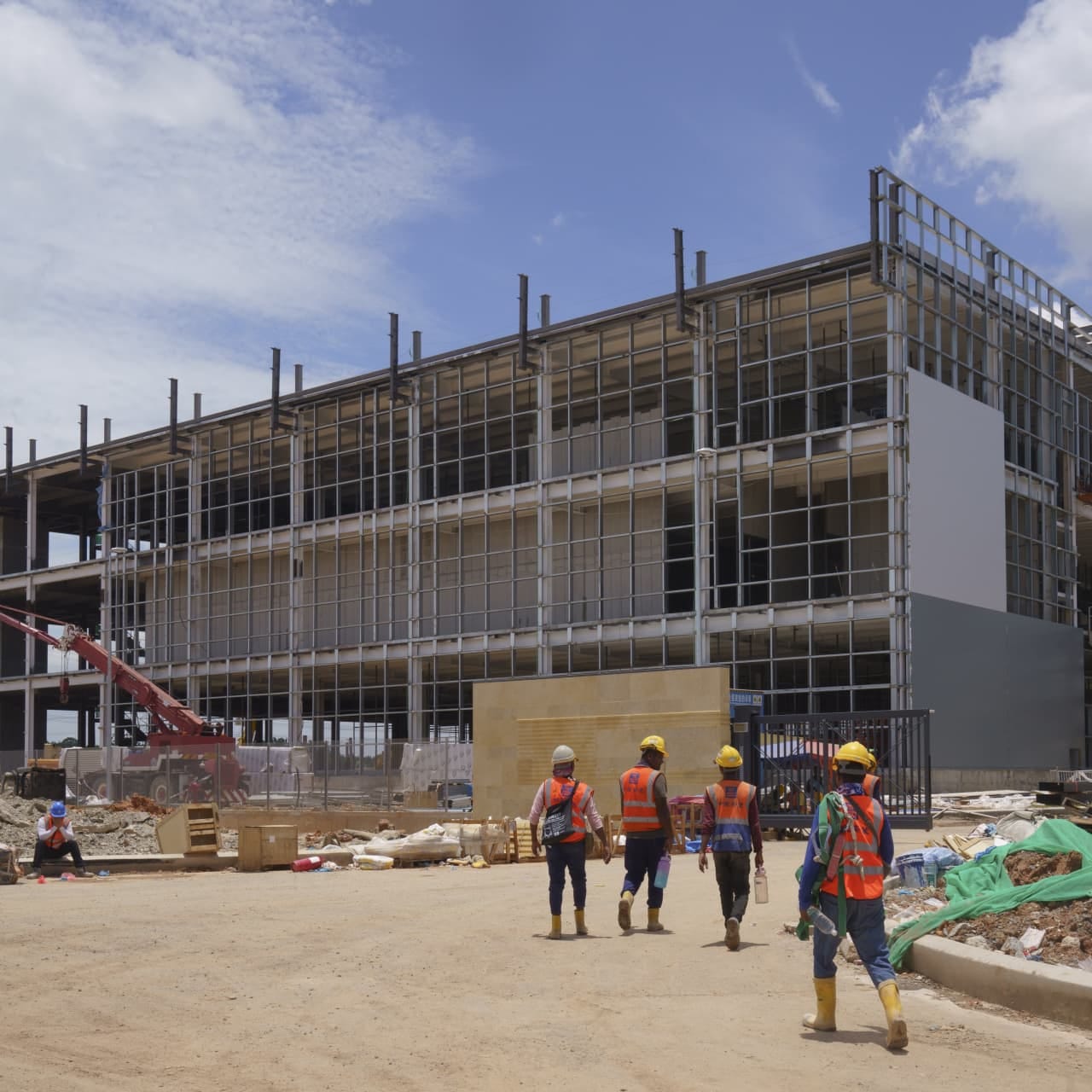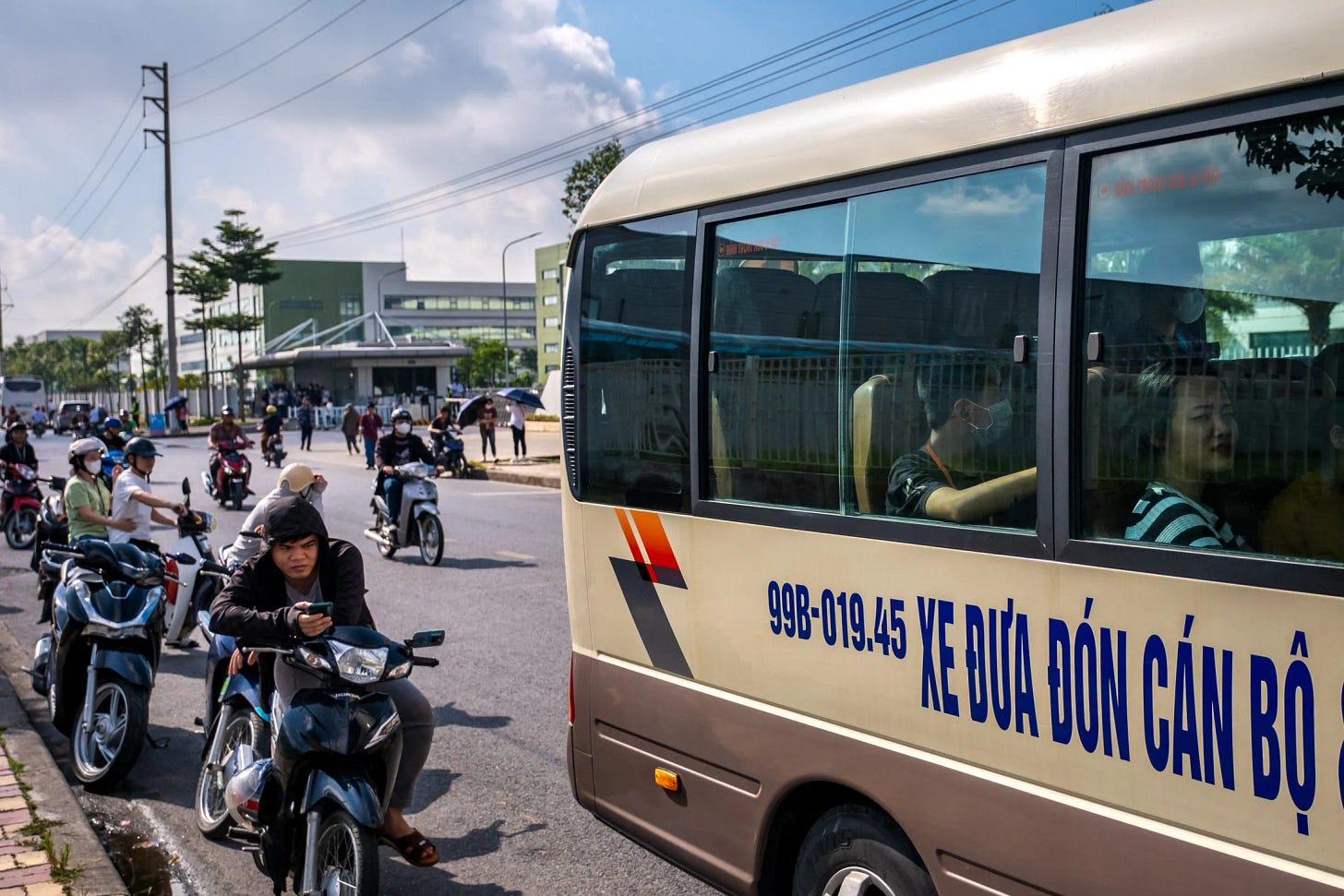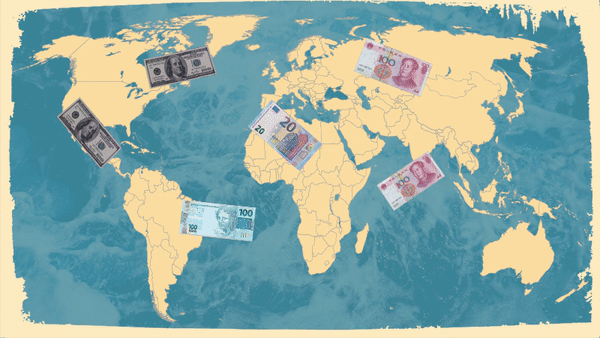
AI: US/China driven Asia tech/AI investment boom pros & cons. RTZ #564
Yesterday I talked about the mideast being an important area for US AI infrastructure investments, partly fueled by the ongoing US/China geopolitical ‘threading the needle’ over trade, tech and AI issues. The overall ‘re-globalisation’ (aka ‘friendshoring’/’reshoring’) going on is also benefiting a number of countries in Asia beyond China.
India of course is an obvious beneficiary, as I’ve discussed, in foreign direct investments from tech to chips for AI driven opportunities.
Others are countries like Malaysia and Vietnam, each with GDPs under half a trillion, and populations of 35 million and a 100 million respectively.
Malaysia in particular, due to its proximity across a bridge to Singapore, is already a burgeoning AI data center hub in Johor, as the WSJ explains in “One of the Biggest AI Boomtowns Is Rising in a Tech-Industry Backwater”:
“Blackstone and TikTok’s parent Bytedance are among those investing in data centers in Malaysia’s Johor, known for palm-oil plantations”
“Nowhere else on Earth has been physically reshaped by artificial intelligence as quickly as the Malaysian state of Johor. Three years ago, this region next to Singapore was a tech-industry backwater. Palm-oil plantations dotted the wetlands. Now rising next to those tropical trees 100 miles from the equator are cavernous rectangular buildings that, all together, make up one of the world’s biggest AI construction projects.”
“TikTok’s Chinese parent company, ByteDance, is spending $350 million on data centers in Johor. Microsoft just bought a 123-acre plot not far away for $95 million. Asset manager Blackstone recently paid $16 billion to buy AirTrunk, a data-center operator with Asia-wide locations including a Johor facility spanning an area the size of 19 football fields. Oracle last week announced a $6.5 billion investment in Malaysia’s data-center sector, though it didn’t specify where.”
“In all, investments in data centers in Johor, which can be used for both AI and more conventional cloud computing, will reach $3.8 billion this year, estimates regional bank Maybank.”
So it makes sense that Asia is a beneficiary of the global trillion plus dollar makeover of the data center industry driven by AI in his AI Tech Wave. Zoom out a bit more, and the magnitude comes in better focus.
Bloomberg lays it out well in “US-China Tech War Fuels Asia Boomtowns Built on AI, Chips”:
“An accelerating influx of tech investment is transforming local economies in Malaysia and Vietnam.”
“As multinationals, governments and startups rush to develop AI, establish chipmaking hubs and carve out access to raw computing power, the fallout from escalating Beijing-Washington tensions is seeding the tech nerve centers of the future in Southeast Asia and transforming the towns that surround them.”
“More than $100 billion in foreign direct investment has coursed through Malaysia and Vietnam from 2020 through 2023, with tens of billions more to come. The growth is resulting in job gains and rising incomes. But property prices and demand for power are increasing, and many of the best jobs are going to foreign workers.”
“The US-China tensions under Trump 1.0 increased incentives for multinationals to have a China +1 strategy,” said Ong Kian Ming, a former Malaysian trade and investment deputy minister.”
The scope is larger than the specific countries themselves:
“Governments across the region are already moving to shield themselves from Trump’s tariffs. Vietnam, one of the biggest beneficiaries of Chinese off-shoring, has already pledged to buy more aircraft, liquefied natural gas and other products from the US. A Malaysian official this week said he warned Chinese companies against investing just to avoid American tariffs.”
“At the same time, nations are continuing to do everything they can to boost a region set to collectively become the world’s fourth-largest economy.”
Malaysia is the smaller one to watch, growing at an accelerated pace:
“Malaysia sees this as a once-in-a-lifetime opportunity of escaping the middle income trap and soon achieving its aspirations as a high income nation,” Chow Kon Yeow, the chief minister of Malaysia’s Penang state, told Bloomberg.
“Labeled an upper middle income nation by the World Bank, with the highest GDP per capita in Southeast Asia by a wide margin after Singapore and Brunei, Malaysia accounts for 13% of the world’s share of chip testing, packaging and assembly. It is now expanding its chip manufacturing capacity.”
Construction workers at the site of a data center in Sedenak Tech Park, in Johor, Malaysia.
Vietnam has its own appeal next to China, especially in new tech hubs like Bac Ninh:
“Just across Vietnam’s border with China and about an hour’s drive from Hanoi, the province of Bac Ninh allows for an easy flow of people and trade. With more than 37,000 new jobs in the four years through 2023, it is fast evolving into a high-tech industrial hub.”
Workers change shifts at a GoerTek factory in Bac Ninh, Vietnam, in July 2023.
And the country is running hard to upgrade its workforce and infrastructure for the tech/AI opportunities ahead:
“Vietnam aims to have 50,000 chip engineers by 2030 and is encouraging people to enroll in upskilling programs. Provinces are providing incentives, such as better access to social housing and medical services, to instructors and students in training programs.”
“The government is also rushing to stabilize power supplies a year after outages caused losses of hundreds of millions of dollars to multinational manufacturers. Large-scale solar rooftop panel projects and programs to generate power from water and waste are underway, while coal plants remain a large part of the solution.”
The broader political dynamics are driving the countries to figure out how best to navigate between the US and China without upsetting both.
And this may have unintended long-term negative consequences for the US and the world at large:
“Much of Southeast Asia is trying to steer clear of picking sides in the US-China divide. The region is even courting Chinese companies affected by the US curbs on chip exports that have made the most advanced AI and memory chips increasingly inaccessible for developers in China.”
“Moving out of China could also allow companies to bypass origin-specific trade restrictions, further accelerating a bifurcation in the global supply chain.”
“Trump’s escalation to target nationality of firms rather than their location could soon result in a world where there are two supply chains for many products – one for the US and other markets that penalize value addition in China, and another for the rest of the world,” said Jayant Menon, a senior fellow at the ISEAS-Yusof Ishak Institute.”
“This is a highly inefficient outcome as the gains from scale economies will be compromised, leading to higher prices for all,” Menon said.”
The whole piece is worth reacing in full to get the bigger picture of the critical smaller details.
But the broader picture is clear for the AI Tech Wave. Much of its growth ahead goes through countries in Asia soon that are already punching above their AI weight. Stay tuned.
(NOTE: The discussions here are for information purposes only, and not meant as investment advice at any time. Thanks for joining us here)


